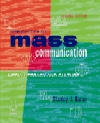 |
1 |  | 
A pseudoevent is |
|  | A) | never covered as actual or real news. |
|  | B) | considered unethical by public relations practitioners. |
|  | C) | an event staged specifically to attract public attention. |
|  | D) | none of the above |
 |
 |
2 |  | 
Which of the following is NOT a stage in the history of public relations? |
|  | A) | the propaganda-publicity stage |
|  | B) | early two-way communication |
|  | C) | the modern technological era |
|  | D) | advanced two-way communication |
 |
 |
3 |  | 
With the publication of ____________, public relations pioneer Ivy Lee moved the focus of his profession from primarily dispensing publicity to providing information. |
|  | A) | Seven Rules for Effective PR |
|  | B) | Man in the Gray Flannel Suit |
|  | C) | Public Relations Control Act |
|  | D) | Declaration of Principles |
 |
 |
4 |  | 
The 1938 Foreign Agents Registration Act was passed in response to PR pioneer Ivy Lee's |
|  | A) | superior lobbying skills. |
|  | B) | British citizenship. |
|  | C) | representation of Hitler's Nazi Germany. |
|  | D) | warning that the war in Europe would soon involve the United States. |
 |
 |
5 |  | 
The public that PR professionals serve through company newsletters, social events, and internal and external recognition of superior performance is |
|  | A) | employees. |
|  | B) | stockholders. |
|  | C) | communities. |
|  | D) | the media. |
 |
 |
6 |  | 
Among the many publics with whom PR professionals interact are ___________. They are served through press packets, briefings, and facilitating access to organization newsmakers in order to build trust and goodwill. |
|  | A) | employees |
|  | B) | stockholders |
|  | C) | communities |
|  | D) | the media |
 |
 |
7 |  | 
When a PR firm charges a client on a fixed fee arrangement, it |
|  | A) | adds a surcharge as high as 17.65% for the handling of such things as printing, research, and photographs. |
|  | B) | charges the client based on the performance of a specific set of services for a specific and prearranged fee. |
|  | C) | charges the client based on the number of hours given to a particular campaign. |
|  | D) | exchanges services of predetermined value with the client. |
 |
 |
8 |  | 
Public affairs is a public relations activity that consists of |
|  | A) | the enhancement of communication between investor-owned companies and their shareholders, the financial community, and the public. |
|  | B) | interacting with officials and leaders of the various power centers with whom a client must deal. |
|  | C) | getting media coverage for clients. |
|  | D) | large-scale campaigns designed to move or shape opinion on a specific issue. |
 |
 |
9 |  | 
Propaganda |
|  | A) | has a negative connotation and is rarely cited as a public relations function. |
|  | B) | is the generation of more or less automatic responses to given symbols. |
|  | C) | is inconsistent with contemporary public relations' emphasis on two-way communication. |
|  | D) | all of the above |
 |
 |
10 |  | 
Public relations pioneer Edward Bernays was responsible for the appearance of the ________, a group designed to encourage smoking among women, in the 1929 New York Easter Parade. |
|  | A) | Let Freedom Ring Marchers |
|  | B) | Our Bodies Ourselves Group |
|  | C) | Torches of Liberty Contingent |
|  | D) | Lucky Strikers |
 |



 2002 McGraw-Hill Higher Education
2002 McGraw-Hill Higher Education